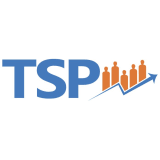This informal CPD article, ‘The Power Of Scenario Based Learning For Teacher Development’, was provided by Liz Maxwell, Director of Partnerships at Teacher Success Platform, providers of research-based recruitment and development tools. Their school-based simulations help you identify and nurture teachers, mentors, and school leaders so they can succeed.
Scenario Based Learning (SBL) is a pedagogical approach that engages learners in interactive problem-solving to deepen their decision-making and judgement. Learners are presented with ‘near-world’ scenarios and receive feedback on their choices. It is a truly immersive experience where learners need to really think through how they would deal with different scenarios, and it is this that makes SBL a powerful approach for teacher development.
As an approach, SBL recognises that it’s not just time that’s needed to master the knowledge, skills and attitudes needed to succeed in the classroom; it’s also crucial to receive feedback and have opportunities to reflect on it.
Using SBL to prepare graduates for their chosen profession
With widening participation and growing numbers, teacher education programs world-wide are looking for ways to provide authentic, ‘near-world’ experiences to alleviate the pressures schools are often under to provide work experience. SBL is not intended to replace school based experiences but rather to supplement and enrich them.
SBL offers a safe, low-risk environment for prospective teachers to practice their decision-making and learn from more experienced professionals. They assume a specific role in the scenario, e.g. You are in your first term of teaching in a large, urban secondary school…. and/or consider different perspectives that allows them to explore the scenario in greater depth. Often, the learner will be presented with a set of plausible choices or responses and will need to decide how they would respond. They can then reflect on the consequences of their choices.
SBL gives prospective teachers the opportunity to immerse themselves in near world scenarios in their own time, whenever, wherever and however they wish. This is based on the insight that building confidence first in a safe, virtual environment is likely to lead to greater autonomy and self efficacy in teaching.
How can you create authentic scenarios?
Creating authentic scenarios is crucial to the success of SBL. Scenarios need to be realistic, engaging and challenging. Teaching is a complex process that requires careful, sensitive and measured awareness and problem solving. Teachers are making literally hundreds of decisions each day and their responses will always be situated and nuanced, rather than routine or formulaic. Scenarios need to reflect this.
Prospective teachers are guided to consider all the information presented, make an informed choice and then consider the consequences of their choices. By presenting multiple pathways, aspiring teachers understand there is no single solution to the complex challenges of teaching. They will think through what they already know, what they need to know and how they could respond. Commitment to ‘solve’ the problem is likely to be higher the more real the scenario appears. This, coupled with constructive feedback from more experienced educators, leads to greater reflective and reflexive thinking.
Another huge benefit of SBL is that it provides a safe environment for making mistakes and learning from them. This facilitates new insights and leads to professional growth. There is no negative impact on students in the classroom. There is no fear of judgement from mentors. There is no feeling of embarrassment role playing in front of your peers.
How can you make SBL more immersive?
You can create rich immersive experiences that encourage deeper reflection and interactive problem solving in many ways. for example:
- Using technology such as VR and video animation
- Ensuring realism: scenarios mirror actual situations, problems and environments the learner may encounter in the workplace
- Using effective storytelling techniques
- Including gamification
Consideration needs to be given to implementation and scalability, as some technologies can be expensive and require human resources, e.g. human avatars. Narrative-driven, easy to play games may also appeal to many users.
Writing compelling scenarios is a definite art. In any good story, you set the scene. You need to understand your role and be given some context. Powerful storytelling will result in an emotional connection. We want aspiring teachers to feel they are actually influencing the outcome. When teachers physically, cognitively and emotionally invest themselves in the scenario outcome, greater learning will occur.
Final Thoughts
SBL offers a unique opportunity to learn as they do in the ‘real’ classroom, practising decision-making and problem-solving through engagement with complex and context-rich scenarios. SBL gives Initial Teacher Education the power to create and deliver programs with realism, scale and flexibility outside the school, and, as such, offers an invaluable tool to the existing repertoire of teacher education.
We hope this article was helpful. For more information from Teacher Success Platform, please visit their CPD Member Directory page. Alternatively, you can go to the CPD Industry Hubs for more articles, courses and events relevant to your Continuing Professional Development requirements.













